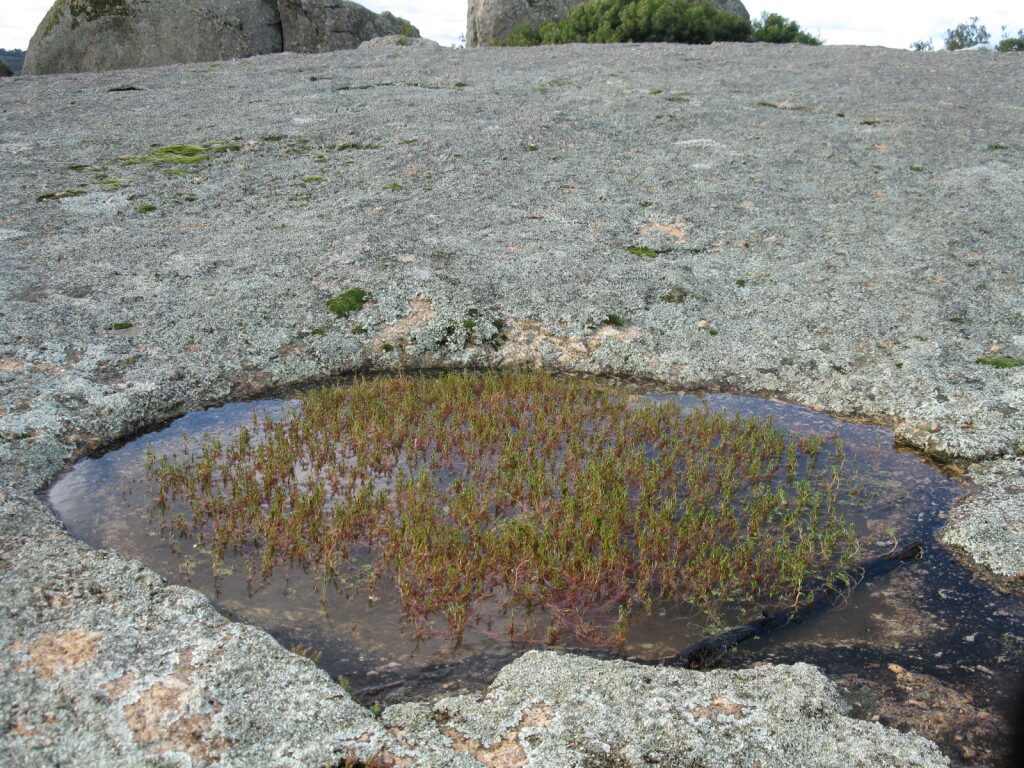Myriophyllum striatum
Orchard Striped Water-milfoilPerennial terrestrial or aquatic herb, sometimes dioecious; terrestrial plants mat-forming 10–15 cm tall, stems to 1 mm diam., rooting at the nodes; aquatic plants with stems to 30 cm long. Leaves in terrestrial plants alternate, linear, 5–8 mm long, margins entire. Leaves in aquatic plants dimorphic; submerged leaves in pseudo-whorls or scattered, ovate, mostly 10–18 mm long, pectinate, with up to 20 pinnae; emergent leaves alternate, whorled above, terete, mostly 10–18 mm long, margins entire. Bracteoles of male flowers triangular to oblong, 0.6–0.9 mm long; bracteoles of female flowers linear-lanceolate, c. 0.4 mm long; flowers solitary. Male flowers initially sessile, later on pedicel 0.4–5 mm long; sepals absent or vestigial; petals 4, 2.5–2.8 mm long, cream to reddish; stamens 8. Female flowers sessile; sepals and petals absent; ovary 4-celled, styles reflexed, stigmas white. Fruit cubiform, purplish-black; mericarps cylindric, 0.7–1 mm long, truncate, with 2–4 longitudinal ribs formed by fused papillae. Flowers spring–summer.
VRiv, MuF, Gold, NIS. Also Qld, NSW. Rare species currently known only from the Wedderburn, Terrick Terrick, and Nathalia areas of northern Victoria. Grows mainly fully emergent in damp situations on creekbanks and around waterholes, but occasionally found in deep water.
A variable species with 2 distinct growth forms. The type form is fully emergent and lacks pectinate foliage. However, the leaves of plants growing in deep water are dimorphic, and these plants resemble larger specimens of Myriophyllum simulans but, unlike that species, the male flowers lack sepals.
Jeanes, J.A. (1996). Haloragaceae. In: Walsh, N.G.; Entwisle, T.J., Flora of Victoria Vol. 3, Dicotyledons Winteraceae to Myrtaceae, pp. 887–908. Inkata Press, Melbourne.
 Spinning
Spinning

